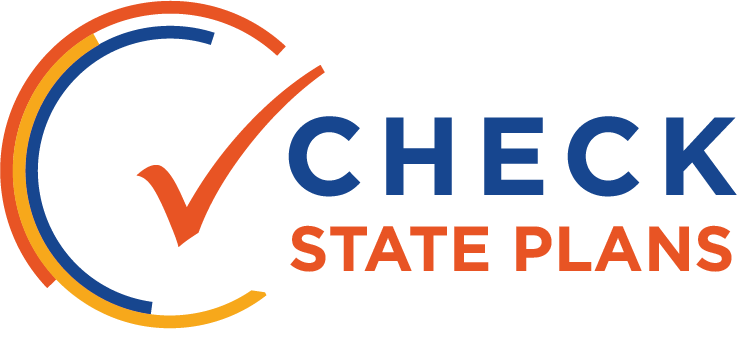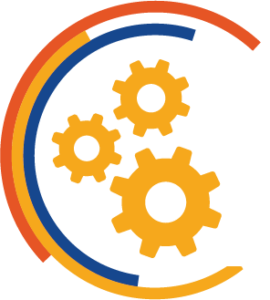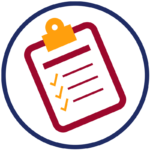
ILLINOIS
- Overview of Illinois' Plan
- Equity
- Strengths
- Improvements
- Coherent and Aligned Vision for Improving Outcomes
- Strategic Use of Funding and Alignment of Resources
- Rigorous Review Process
- Continuous Improvement, Monitoring and Evaluation
- Evidence-Based Interventions
- Capacity Building and Autonomy
- Engagement
- Sustainability
Promise to Practice Overview
Equity
Illinois’ IL-EMPOWER platform and Illinois Quality Framework for school improvement include a strong equity focus, yet these tools are disconnected from the school improvement application process or guidance. The state’s framework also does not prioritize the examination of data and does not include tools or templates to review the data. Additionally, the state provides a Racial Equity Toolkit from the Government Alliance on Race and Equity on its website, though it is not aligned with Illinois’ school improvement guidance and process.
Strengths
Illinois has developed a clear improvement framework, and has supported districts and communities in understanding the new approach through trainings and easy-to-understand materials. The state also has developed a clear process to support districts in identifying outside partners for school improvement and is facilitating an RFP process, aligned to the Illinois Quality Framework, for districts and schools to select a service provider.
Improvements
Illinois should provide more guidance to states to identify schools with the greatest need, support the implementation of evidence-based practice, and allocate improvement funds. The state could also help districts to connect the multiple state and federal mandates into one effective plan. Illinois also gives significant autonomy to school leaders and relinquished much of the oversight responsibility to outside entities.
Coherent and Aligned Vision for Improving Outcomes:
Strategic Use of Funding and Alignment of Resources:
Rigorous Review Process:
Continuous Improvement, Monitoring and Evaluation:
Evidence-Based Interventions:
Capacity Building and Autonomy:
Engagement:
Sustainability:
Click through the tabs on the left to see how Illinois scored in each category.
Equity
How well does the state’s approach to school improvement include focused attention on supporting underserved students and closing the achievement gap? Does the state require LEAs to maintain an equity focus in their school improvement plans, activities and resource allocations?
Illinois’ IL-EMPOWER platform and Illinois Quality Framework for school improvement include a strong equity focus. The framework is designed to encourage an equitable, coordinated, and focused school-wide approach to ensure that all students are provided an opportunity for academic success. However, these high quality materials and tools seem completely disconnected from Illinois’ actual school improvement application process or guidance. It is not clear when an equity analysis is conducted, or if it is mandatory as part of receiving school improvement funds. Based on existing information, the state does not appear to require districts to maintain an equity focus in their school improvement plans and resource allocations.
The state’s framework also does not seem to prioritize the examination of data. Illinois leans on subgroup data for any sort of analysis leading to the reduction or elimination of an achievement gap. Other important equity indicators, such as attendance and personnel, do not appear to be included in the school improvement guidance. The equity resources available for review reference other school district approaches to equity, like Boston Public Schools, which is better than nothing, but this is not a tool or template to help district leaders dissect their own data, understand the root causes of their achievement gaps, or how to build a plan specific to the needs of the students in a specific school.
The state provides a Racial Equity Toolkit from the Government Alliance on Race and Equity on its website. It is certainly a comprehensive set of tools. However, this document appears to be standalone and not aligned to the states school improvement guidance and process.
Strengths
How is the state thoughtfully leveraging ESSA’s flexibility to put in place the necessary policies and procedures that create an enabling environment for effective and sustained school improvement, and that consider state/local lessons learned from past efforts? What parts of the state’s turnaround strategy or guidance to LEAs were strongest or exemplary?
To date, Illinois has clearly invested most of its resources and person power in developing a clear improvement framework and delivering trainings to orient districts and communities to the state’s new approach. The IL-EMPOWER materials are designed for the average person to understand them and take away how the state plans to use school improvement funds. The state has also developed a clear process to support districts in identifying and utilizing external partners for school improvement, which is important because the state is encouraging districts to use these partners to a large degree. Illinois is facilitating an RFP process, aligned to the Illinois Quality Framework, through which districts may select service providers that fit their needs. The state looks to assist districts and schools by documenting the service providers that have shown success in the 31 IL-Empower pilot sites.
Improvements
How can the state improve its turnaround efforts? What parts of the state’s strategy or guidance to LEAs were unclear? What risks and challenges might the state face with its current approach?
Illinois has not yet developed guidance for districts to use when allocating school improvement funds or to design and implement school improvement plans. The state also does not provide districts with a guide to identify the schools in the greatest need or implement evidence-based interventions. Illinois ESSA and federal programs materials in no way resemble the robust nature of the Illinois Quality Framework, and there is not yet available a school improvement application. These things indicate that the state has not yet finished developing its school improvement guidance.
Illinois could help districts in connecting the multiple state and federal mandates into one effective plan with embedded equity opportunities and achievement gap reductions. Additionally, the state should look to redesign its school improvement tool to be a true performance management plan with clear expectations for all internal and external stakeholders. All school materials and supports should align to the state’s vision of the whole child.
Illinois has provided autonomy to school leaders but has given most of the oversight responsibility to outside entities. The state has some responsibility for guiding and overseeing districts in school improvement, including providing more resources and technical assistance on how improvement plans can implement the vision, as well as stakeholder engagement and sustainability. The state should consider focusing funding on more than just adequacy and consider a formula that incorporates highest need and most effective use of funds.
Coherent and Aligned Vision for Improving Outcomes
How well does the state articulate a coherent vision or theory of action that drives their school improvement efforts? Is this vision aligned with the state’s accountability system and goals for closing the achievement gap?

Illinois articulates a clear vision for a whole child, whole school approach to school improvement called the Illinois Quality Framework. This vision permeates all of Illinois’ school improvement materials, and the state’s school improvement website is replete with documents, infographics, and tools aligned with this framework. The state’s Illinois Quality Framework school improvement guidance and support materials are housed on its IL-EMPOWER website, which is clean and easy to navigate. The materials found here are very high quality. The framework itself has equity-related questions woven throughout, and when used rigorously in districts is sure to prompt useful conversations among school and district leaders. That said, it seems light on prompts specifically to examine the data to search for root causes to address in order to close achievement gaps.
The state does not appear to have articulated in its school improvement documents a theory of action that indicates the roles of the state, districts, and schools in applying this framework. In addition, the framework is not articulated in the guidance or the application for funds, which is a missed opportunity. In fact, the state’s ESSA-specific school improvement materials seem to bear little connection to the high quality materials on the IL-EMPOWER section of the website. Federal program grant applications are housed in a different section and seem much more compliance-oriented than IL-EMPOWER. Illinois’ Title I 1003a grant application is not available yet, though some screenshots of the online application portal were available, and guidance to districts for completing their plans is also online. It seems that the state has not finished aligning its federal programs activities with its school improvement work.
Strategic Use of Funding and Alignment of Resources
Is the state allocating funding in a way that is strategic and maximizes resources? Are LEAs expected to prioritize improvement efforts that address the underlying performance issues?

It is difficult to determine how Illinois plans to allocate improvement funds because the state’s school improvement grant application is not available and current guidance is thin. It appears that the state will allocate school improvement funding with a formula that weighs student enrollment and percentage of “adequacy.” However, the state does not provide a definition for “adequacy” and it is not clear whether school need is prioritized in any way. The state’s guidance does require districts to detail how improvement funds will be used and work in tandem with other provisions and funding available under ESSA. The state does require districts to submit a budget that includes references to timelines, state and federal requirements, management, interest payments, indirect costs, etc. However, there are no requirements for districts to justify or demonstrate how funds will be used to maximize resources, prioritized to schools most in need, or how funds are aligned to the overall vision.
Illinois seems to be targeting most school improvement funds to be used by districts to receive services from “education partners” that they select. The state has provided a model contract that districts can use to procure services, which will be a helpful tool, and also provides lists of approved partners, categorized in alignment with the Illinois Quality Framework. It will be important for the state to ensure that districts are partnering with service providers for services aligned with the needs determined using the Illinois Quality Framework.
The state’s existing materials do explain minimum funding amounts for districts with comprehensive or targeted support and improvement schools. The fact alone that Illinois is providing improvement funding for targeted schools is encouraging, as many states are not or are unable to do so.
Rigorous Review Process
Is the state applying rigorous criteria and review processes to ensure resources will be used to support effective school improvement efforts? Is the state prioritizing funding to LEAs who demonstrate the greatest need for school improvement funding (including LEAs with a high percentage of CSI and TSI schools) and the strongest commitment to school improvement?

Illinois has not aligned its school improvement application, federal program guidance, or information with a vision of whole child, whole school, whole community. Again, the difference between the IL-EMPOWER materials and the state’s federal program guidance is stark. The review process appears to be compliance-oriented in which a complete plan with “adequate” responses will be deemed substantially approved. State guidance to districts regarding plan development is centered entirely around compliance. It is not clear what additional assistance will be provided to districts with plans that lack interventions sufficient to turn around the performance of the lowest performing students.
The state does require districts to develop a set of criteria based on the use of an external partner to assist in developing and implementing the school improvement efforts, and these criteria must be aligned with the needs assessment data. It would be useful to know the extent to which the state will review plans along with selected partners for each district to ensure alignment of partnerships with determined needs.
Continuous Improvement, Monitoring and Evaluation
Does the state have a robust, data-driven process to monitor LEAs’ implementation of the school improvement plans within their district? Did the state establish clear milestones to ensure improvement over time, and within four years?

A plan for monitoring and evaluating progress was not articulated in the documents reviewed. Because the state’s grant application is not yet available, it is not yet clear what school improvement goals and milestones districts will set. While the Illinois Quality Framework could be a powerful tool to help districts have rigorous school improvement conversations, there does not yet seem to be an opportunity for the state to learn from districts their concrete school improvement targets in order to monitor progress.
Evidence-Based Interventions
To what extent is the state mandating LEAs use evidence-based strategies in their improvement efforts? Does the state provide guidance and supports to LEAs to help them identify and implement the most effective strategies based upon their needs?

Illinois provides districts with a list of state approved providers and programs from which the districts can select on its IL-EMPOWER website. In reviewing the application process to become a provider, it appeared to be more in line with a request for proposal process rather than one focused on evidence in working with low performing schools and the evidence of success in student achievement and closing achievement gaps.
It is also unclear how the state will determine if the interventions implemented at the recommendation of the approved providers are evidence-based or which interventions are the most effective at closing achievement and equity gaps. The application does ask districts to provide a description of how the proposed interventions are evidence-based. It does not make clear that the state is planning on providing assistance to districts in determining which interventions are the most effective at closing achievement gaps and equity gaps. This assistance may be coming in the form of the current IL-EMPOWER pilot, though there is not much detail yet on how the state will document the successes or challenges of that work, or whether vendors will be removed from the approved list if they are not able to show improvement.
Capacity Building and Autonomy
How well does the state articulate, delineate or set parameters around which interventions and responsibilities belong to the state, LEA and/or school? Does the state provide support or guidance to help LEAs identify and reduce barriers to school improvement? Does the state have a framework or process to support and monitor outside entities who partner with the state, LEAs or schools in school improvement efforts?

While Illinois school ESSA-related school improvement applications and guidance is un- or underdeveloped, the state has clearly invested the lion’s share of its resources so far in creating a structure for school improvement activities at the local level. The state seems to be providing near-complete autonomy to districts for them to use school improvement funds to partner with service providers, and has developed programmatic guidance to help them do so.
Illinois’ documents indicate that representatives from the state has held five public forums across the state to orient schools and communities to expectations under IL-EMPOWER and using the Illinois Quality Framework. The state has also hosted and posted webinars with this information. IL-EMPOWER materials are crystal clear and designed to be understandable by the layperson, and the Illinois Quality Framework is at its core a capacity building tool.
The state is providing school support managers to each comprehensive school, and this is also an option for targeted schools. From the information available, these individuals seem to be school improvement coaches that will work with district and school leadership and staff. Illinois’ website also hosts a peer finder tool with which district leaders can find other similar districts to connect with and learn from.
Illinois deserves credit for this structure, yet the fact remains that so far there appears to be little state involvement directly with districts, and the responsibilities of the state, district, school, and partners are not articulated. There is concern that without more support from the state, districts will not be able to use their autonomy to maximum effect.
Engagement
Does the state require LEAs to engage with stakeholders such as parents and community members in the development and implementation of their school improvement plans? Does the state provide sufficient guidance and resources to LEAs to effectively do so, helping them foster local buy-in and promote sustainability?

Stakeholder engagement is included in the Illinois Quality Framework to a strong degree, with a whole section entitled Family and Community Engagement. Again, without knowing the expectations for districts as they apply for school improvement funds, it is unclear the degree to which districts will use the framework with fidelity. In the state’s ESSA-specific guidance on district improvement plans, engagement is included only as a compliance component.
Engagement
Does the state have a plan in place to review the school improvement efforts statewide and evaluate the impact and effectiveness? Does the state have a process in place to support LEAs and schools by enhancing their capacity to maintain their improvement efforts upon exiting identification and intervention?

The state appears to have little reference to sustainability. A systematic review of school improvement efforts was not observable. There does not appear to be a plan for how schools are to sustain improvement once they exit school improvement status. The state’s heavy reliance on third party providers makes it difficult to know how schools would sustain improvement efforts upon exiting identification and beyond the length of the contract with the third party.
- Overview of Illinois' Plan
- Goals
- Standards and Assessments
- Indicators
- Academic Progress
- All Students
- Identifying Schools
- Supporting Schools
- Exiting Improvement Status
- Continuous Improvement
 Overview
Overview
Strengths
- Illinois has proposed a clear rationale for its K-12 goals, with close alignment to its postsecondary attainment goal. In linking the two, the state can bring coherence across multiple systems and ensure that there is shared ownership for students from K-12 to postsecondary education and training.
- Illinois has clearly sought out and respected the feedback from its stakeholder groups. Throughout its plan, it cites specific feedback as an explanation for why it adopted particular approaches as well as dissenting opinions.
- In addition, Illinois continues to prioritize academic performance in its accountability system, while keeping open the possibility of an early learning indicator as well as one for fine arts.
- The state’s unique process for reporting on students who exit special education and English-language learner status is also noteworthy.
Weaknesses
- Illinois’ calculation for student growth is confusing, and by weighting growth twice as much as proficiency, it may over-emphasize growth at the expense of grade-level proficiency.
- Illinois could also strengthen its plan by developing a more rigorous method for identifying and supporting schools with low-performing subgroups of students.
- Finally, the state’s proposed intervention system may be insufficient to the task of rehabilitating the state’s lowest-performing schools. The state’s approach to intervention is vague and lacks any real urgency for improvement.
Click through the tabs on the left to see how Illinois scored in each category.
GOALS
Illinois’ vision clearly drove the development of its ESSA plan.
Illinois has articulated a vision of “whole, healthy children nestled in whole, healthy systems,” and it cites stakeholder buy-in for the vision. The state has also established an overarching goal of having 60 percent of Illinoisans with a high-quality degree or postsecondary credential by 2025.
Illinois identifies long-term goals with high expectations, aligning K-12 and higher ed.
Illinois expects 90 percent of students to meet expectations by 2032 (i.e., third-graders reading on level, fifth-graders proficient in math, ninth-graders on track to graduate, high school graduation/college and career ready). These milestones are intended to align with the state’s postsecondary attainment goal, which is a strong aspiration. An intentional alignment between K-12 and higher education goals should be a model for other states. In addition, Illinois maintains the same goal for all subgroups, which sends a message that the state has high expectations for every student.
Illinois’ long-term goals for its five- and six-year graduation rates are the same as its four-year rate (90 percent). The state could strengthen its plan by setting higher goals for its extended-year rates than its four-year rate
The state has set student-level goals for English-language acquisition.
Illinois articulated a reasonable method for using a growth-to-target model for setting interim student-level goals for English language acquisition. The state is waiting for more current data on English language proficiency, and in the meantime has provided placeholder goals that it plans to update in the near future.
STANDARDS AND ASSESSMENTS

Illinois has clearly defined its standards and assessments.
Illinois adopted the Common Core State Standards in 2010, and Illinois has a high-quality assessment system in grades 3-8 through the Partnership for Assessment of Readiness for College and Careers (PARCC). The state also mentions that it is using the Dynamic Learning Maps-Alternate Assessment for students in grades 3-8 with severe cognitive impairments.
At the high school level, Illinois is using the SAT as its accountability assessment. That choice has pros and cons. While the SAT is familiar to students and families, and it is recognized at colleges all across the country, we don’t yet know whether the SAT is fully aligned to the state’s academic standards. And, without the ability to use accommodations and submit valid scores, some of the key benefits of using the SAT may not extend fully to all students.
The state will include its science assessment in its accountability system.
Although science represents a nominal addition to its accountability system (5 percent beginning in 2019-20), this decision signals schools to pay attention to student performance beyond reading and math.
INDICATORS
Illinois’ indicators are logical, strongly research-based and actionable.
Illinois has chosen a logical set of indicators to include in its accountability system (academic proficiency, growth, chronic absenteeism, climate surveys, and English-learner proficiency) as well as an on-track indicator for ninth-graders (based on their accumulated credits and grades).
Overall, Illinois’ system emphasizes academic performance, with 75 percent of the weight placed on academic proficiency and growth. In fact, 50 percent of Illinois’ system is based on academic growth. However, the calculation for growth is not well-defined in grades 3-8, and academic growth in high school cannot be determined with the state’s current assessments.
At the high school level, Illinois could strengthen its plan by placing a stronger emphasis on the four-year graduation rate. As currently drafted, the state’s plan appears to use an aggregate graduation rate composed of the average of the four-, five-, and six-year rates, which would inflate graduation rates and dilute the value of completing in four years.
Moreover, Illinois is exploring the addition of a fine arts indicator, which seems to align with the state’s desire to educate the “whole child.” The weight of this indicator, which will be based on the percentage of students enrolled in a fine arts course, will be determined when more data are available.
Illinois incorporates both college and career readiness into its high school system.
It provides multiple opportunities for students to demonstrate their readiness for college and careers, such as course-taking, assessments, and co-curricular experiences, and its emphasis on all students engaging in college and career opportunities should be commended and replicated by other states. However, it can be improved by providing greater detail about the definition of “quality” for the “career” measures and placing greater emphasis on externally validated measures (i.e., exams) over course grades.
The state’s plan could also provide more information about its pathway endorsement and college remedial coursework measures. As data become available, the state should analyze the extent to which students who met the benchmarks ultimately enrolled and demonstrated success in postsecondary education and training.
Illinois proposes a lower weight for the English language proficiency indicator compared to other states.
Illinois is proposing to weight the English-language proficiency indicator at 5 percent, which is lower than other states. However, Illinois specifically notes that it will include all K–12 English-language learners in this indicator, which is an innovative idea. It goes beyond ESSA’s requirement, which only asks states to use English language proficiency scores from grades 3–8 and once in high school.
Illinois has also proposed two additional school-quality indicators for the elementary level.
Notably, Illinois deserves credit for considering an indicator focused on pre-k through second grade, reflecting the state’s desire to recognize the importance of early learning.
While these are all potentially promising individually, the state needs to be cautious about incorporating too many indicators. In fact, the state’s plan is already lacking in evidence that its proposed indicators provide uniquely valuable information on school performance, and it could be strengthened by adding that additional information.
ACADEMIC PROGRESS
Illinois’ plan heavily emphasizes student growth.
The state has given growth a weight of 50 percent of the total (the largest single weighting of any measure). And although assessments are not yet available at the secondary level, Illinois deserves credit for aspiring to maintain an emphasis on growth in the high school grades as well.
However, the state should be careful not to place too much emphasis on growth. The state is proposing to weight growth twice as much as proficiency, and in future years it may count student proficiency at only 7.5 percent in each content area. This approach may take away emphasis on grade-level performance and be hard to convey to the public.
In addition, the state’s plan lacks detail around the specific method it plans to use to calculate student growth.
ALL STUDENTS
Illinois’ plan safeguards against student subgroups being hidden under averages or summative grades.
Illinois has proposed a strong policy that a school may not receive the top two designations (exemplary or commendable) if it has a consistently underperforming subgroup. However, without data, there is concern that the state’s definition of “consistently underperforming” subgroups may set a very low bar. Because it focuses only on groups performing at the bottom 5 percent of the state, schools may continue to maintain significant gaps, so long as subgroup performance does not fall below the bottom 5 percent.
Illinois proposes a strategy to identify separate subgroups of former students with disabilities and former English language learners and report on their progress.
Including these individuals – in addition to current students with disabilities and ELLs – as their own group will allow educators and policymakers to easily see how those students perform after they are no longer receiving services.
Illinois’ n-sizes are appropriate but participation rate requirements are concerning.
The state’s n-size for reporting (10) and accountability (20) are appropriate for balancing the needs of privacy and transparency, but the plan’s approach to the 95 percent participation requirement is concerning, as it only limits schools being rated in the top category (i.e., the top 10 percent of schools in the state) and to those that miss the target for three consecutive years.
IDENTIFYING SCHOOLS
Illinois’ proposed school classification system is potentially misleading.
The state may want to work with parent stakeholder groups to make sure its proposed color-coding system aligns with school performance levels.
Additionally, the state proposes rating schools on either a single year of data or a three-year rolling average (whichever is higher), which will create an artificial floor for schools and give schools only the benefit of positive results without the consequences of any downswings.
Illinois’ identification of schools with consistently underperforming students only meets the bare-minimum requirement.
The state’s identification of schools with consistently underperforming students is limited to schools with a subgroup performing at the bottom 5 percent. Illinois should consider developing an additional definition of “consistently underperforming” subgroup and identify/support these schools as well. Also, it is unclear what designation would be given to schools that do not receive Title I funding, and what, if any, support will be provided.
Finally, Illinois’ plan would be much stronger if it actually modeled out what its choices would mean for schools using existing data (until three years of data are available). Illinois won’t know whether it is accomplishing its desired objectives until it starts applying its decisions to actual data.
SUPPORTING SCHOOLS
Illinois’ plan to support schools hinges on the IL-Empower system.
The state plans to approve external providers and the prices they can charge schools, but it’s not exactly clear how the state will determine if low-performing schools are choosing interventions that are truly evidence-based. The state’s plan provides very little detail about its needs assessment/equity audit tool, approach for ensuring evidence-based practices, or plan for intervening in schools that do not demonstrate adequate improvement.
In particular, Illinois’ use of IL-Empower also appears problematic for several reasons:
- Schools that use it will need to self-identify areas for improvement even though these schools would seem to be the least likely to have the wherewithal to do so.
- Schools have four years to improve (i.e., a planning year plus three years for implementation), which was a stakeholder recommendation.
- Under IL-Empower, schools and districts (i.e., “exemplary” and “commendable”) are eligible to serve as providers and receive funding to do so. This could be promising, but it raises a host of logistical issues.
Notably, Illinois states that a “lowest performing” school would not be able to remain in the network indefinitely. The state would then work with the school to identify any necessary supports or resources, but the plan does not identify any specific actions that schools would be required to pursue or approaches that have proved to be effective in the past. The state would do well to beef up its approach with its most distressed schools.
Illinois will issue its school improvement funds through a formula.
The state appears to be planning to issue all of its money for school-improvement funds – 7 percent of its Title I funding – through a formula rather than running a competition to identify the most promising district plans. In addition, Illinois should consider using the 3 percent Direct Student Services set-aside to reinforce school-improvement efforts.
Exiting Improvement Status
Illinois has defined three areas of focus within its exit criteria.
However, the lack of specifics within two of these criteria is a cause for concern. Another point of concern is that the plan indicates the criteria are “proposed” and potentially still in development.
The first criterion is that schools would simply no longer have to be identified for the list. This may not be sufficient to demonstrate real, sustained progress. By failing to identify numeric targets in advance, the state is not providing schools with sufficient information about what they need to do in order to demonstrate satisfactory progress.
The state should be commended for proposing a requirement that schools develop a sustainability plan prior to exiting their identification status, although this language is still somewhat vague.
In addition, the state should be commended for requiring a growth trajectory as part of the state’s exit status. For this to be effective, it is necessary for the state to set specific targets and timelines in advance.
Continuous Improvement
Illinois will monitor implementation and make changes accordingly.
Its plan to add new indicators into its accountability system over time suggests a commitment to continuous improvement, as does its plan to monitor specific indicators already included in the system (specifically the way it will be measuring student growth).
Illinois is committed to seeking stakeholder feedback and continuous improvement.
It might be helpful to develop some sort of overarching stakeholder group that provides feedback and helps the state make decisions on the impact of the accountability system on school, district, and classroom practice at regular intervals as the system is implemented.
While Illinois’ plan describes its support for local efforts at continuous improvement, it is heavy on state monitoring and light on concrete tactics. If IL-Empower does not lead to school improvements, the state did not identify any other strategies for supporting low-performing schools.






